#manfred hightower
Text
TWOIAF/Fire & Blood: Maegor, Ceryse, and Alys
Warning, Spoilers Ahead…
Thanks to everyone but the king, Aenys managed to survive the multiple rebellions that broke out in the first months of his reign. He has now appointed Maegor, his younger brother, as the Hand of the King.
The brothers were able to smoothly rule together from 37 to 39 AC. Then the problems arose.
Queen Alyssa gave birth to Vaella, a girl who died shortly afterward. Maegor decided this would be the perfect time to take a second wife. Maegor arrived at Dragonstone and wed Alys Harroway, the daughter of the new Lord of Harrenhal. The wedding was a Valyrian rite, performed by the Dowager Queen Visenya. Maegor announced his second marriage while proclaiming Lady Ceryse Hightower (his first wife) to be barren.
What was it about Alys that caught Maegor’s eye? Exceptional beauty? Wit? Great birthing hips? Was he close to the Harroway family? She was there when he decided to take a second wife?
Aenys wasn’t happy as the wedding took place without his “leave, knowledge, or presence”. I am unsure why Aenys expected anyone to consult him before making a decision. Yes, Aenys is king but one who has no respect – from anyone. And Maegor doesn’t seem the type to request permission before he makes a move.
Aenys had a fit, Lord Manfred Hightower (father of Ceryse) had a fit. The High Septon in Oldtown had a fit. Many “pious” lords in the realm protested. Maegor remained defiant – his father married multiple women, so why can’t he? He believed the strictures of the Faith might “rule lesser men but not the blood of the dragon”. I wonder if this is where Jaehaerys received his inspiration for his later proclamation? You would think the Faith would be happy it didn’t involve incest.
The High Septon and the lords are rather hypocritical. They all kept their mouths shut about polygamous marriages while Aegon was king. A former High Septon even crowned Aegon! Multiple lords were throwing their daughters at Aegon throughout his reign – despite the presence of his wives.
I understand Manfred Hightower’s protest – multiple wives threaten his daughter’s position and if another wife gives birth to a child – well it won’t be his bloodline intermixing with the Targaryens. The Faith and the rest of the lords need to be told to “shut your mouth and know your role”. (To quote the Rock). They had a chance to protest when Aegon established his regime – it is a case of “too little, too late” to make stipulations on Targaryen marriages (at least while they still have dragons to back their actions).
We know the reason all these lords have protests – Aenys is a weak king and they want to push him around. As well as cause division between the two brothers. The game of thrones isn’t always played on the battlefield. Remove Maegor and Visenya from the equation and you’re left with a Targaryen who won’t use his dragon in battle. Easy pickings.
Aenys decided to (finally!) take a stand: put Alys Harroway aside or endure five years of exile. Maegor chose option 2 and departed for Pentos with Alys, Balerion, and Blackfyre. Aenys requested that Maegor leave Blackfyre but was told “no”. Can you imagine the poor citizens of Pentos when Maegor arrives on Balerion? I guarantee Maegor and Alys didn’t have to pay for a thing their entire stay. Pentos would be grateful that Maegor didn’t go the route of “Conquest, part 2: the Essos edition”.
Aenys made Septon Murmison the Hand of the King. He also had Septon Murmison lay hands on Ceryse’s belly every night to make her fertile. Lady Ceryse tired of this effort and left King’s Landing to rejoin her family in Oldtown.
Poor Ceryse – this entire situation was humiliating for her. Proclaimed publicly as barren, husband takes a 2nd wife (was she even told before Maegor announced it publicly?), abandoned, and forced to have a strange man paw at her belly in an effort to make her fertile. How were Aenys and Murmison planning to test Ceryse’s fertility after these laying of hands rituals? Have Maegor sleep with her after five years of exile? When she would be forty-two years old? Was she supposed to test out her new-found fertility on a man and then “moon tea” the baby out of existence? Simply accept the Septon’s insistence she was now fertile. Was Maegor faithful to Ceryse throughout his marriage? He seems insistent Ceryse is the problem but if he was straying from the marital bed – shouldn’t he be wondering why there aren’t any dragonseeds running around?
Exiling Maegor didn’t bring Aenys peace. The High Septon continued to bluster about Targaryens, and now the lords wondered how Aenys could govern the realm when he couldn’t even control his brother.
In short, Aenys played into his opponents’ hands and lost his strongest supporters. Maegor is in Pentos, and I doubt Visenya has much patience left for Aenys’ weakness.
Up next, Aenys’ eldest children wed.
#asoiaf#game of thrones#twoiaf#house targaryen#aenys targaryen#maegor targaryen#maegor the cruel#ceryse hightower#alys harroway#manfred hightower#house hightower#high septon#septon murmison#pentos
4 notes
·
View notes
Text
The World Of Ice And Fire/Fire & Blood: The Conquest Ends...
Warning, Spoilers Ahead…
The future Crowlands have been conquered, Harrenhal destroyed, the Field of Fire unleashed, the Storm King made his last stand, one King knelt, and another flew. Then there’s Dorne but Rhaenys doesn’t want to talk about Dorne – they were very rude!
Aegon and his host are heading towards Oldtown. Oldtown is the greatest city in Westeros. The competition isn’t that steep – King’s Landing doesn’t exist at this point so the only real competition is White Harbor and Lannisport.
Oldtown is ruled by the Hightowers: “the oldest, richest, and most powerful of the noble houses of the Reach”. Oldtown is the home location of the Faith of the Seven and the Citadel.
The Faith is led by the High Septon – “Father of the Faithful, the voice of the new gods on earth” who commanded the Faith Militiant, “the fighting order the smallfolk called the Stars and Swords”.
Remember the Faith Militiant – they’ll be a thorn in the side of the Targaryens for generations to come.
Aegon and his host arrive at Oldtown only to find the city gates open and Lord Hightower waiting to make his submission.
The High Septon has been praying and fasting since Aegon began his conquest. On the seventh day of fasting, the gods informed the High Septon that if they didn’t submit to Aegon, the Hightowers would be thrown down, the Starry Sept destroyed, and Oldtown burned.
Do you need the gods to tell you that? Harrenhal and the Field of Fire should lead you to that outcome. The Septon’s “prophecy” is more of a sop to the ego – Oldtown (Hightowers) didn’t surrender, the gods commanded it: “Everybody chill, its totes god’s will”.
Manfred Hightower, Lord of Oldtower, “was a cautious lord and godly”. One of his sons had become a septon and another served with the Warrior’s Sons. Manfred offered of his sword, his city, his oath, and his youngest daughter. Aegon accepted all but the daughter.
Aegon had his second coronation at Oldtown surrounded by septons, maesters, and thousands of cheering crowds. The second coronation became the fixed start date of Aegon’s reign. Because it’s not relevant unless the maesters have a hand in it.
The common belief was that Aegon would rule from Oldtown or Dragonstone but Aegon decided he wanted a brand new city: the future King’s Landing.
Thus the Conquest of the Seven Kingdoms (minus Dorne) comes to an end.
I have been bouncing between A World Of Ice And Fire, Fire & Blood, and Rise of the Dragons. If you are interested in fine details, I would recommend Fire & Blood or the World Of Ice And Fire. If you want gorgeous art and simple highlights of the story, Rise of the Dragons is the way to go. Or buy all three – that’s the option I chose.
If you haven’t bought The Rise of the Dragons, here is a listing of the new artwork through the Conquest:
· A beautiful, moody Valyria after the Doom
· The Field of Fire
· A map of Westeros
· Argilac the Arrogant
· King Mern IX, King Loren I, and their armies
· Torrhen Stark (wearing purple, of all colors) on a cool throne with Weirwood tree engraving and wolf heads on the arm rests)
· Princess Meria Martell with her handmaidens
· An awesome painting of Dragonstone
· Aegon joins the grand alliance
· Balerion Burning Harrenhal
· The Last Storm (featurning a House Connington bannermen)
· Ronnel Arryn with Vesenya
Up next: The Wars of King Aegon I
#asoiaf#game of thrones#twoiaf#Aegon the Conqueror#aegon targaryen#Manfred Hightower#House Hightower#Oldtown#King's Landing#a song of ice and fire
1 note
·
View note
Text



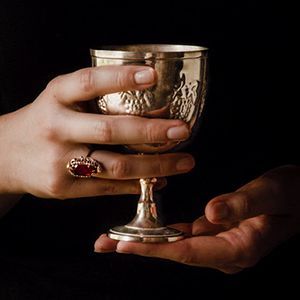


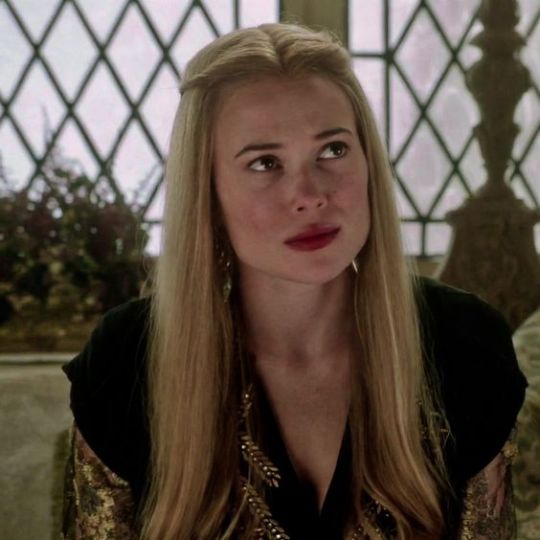
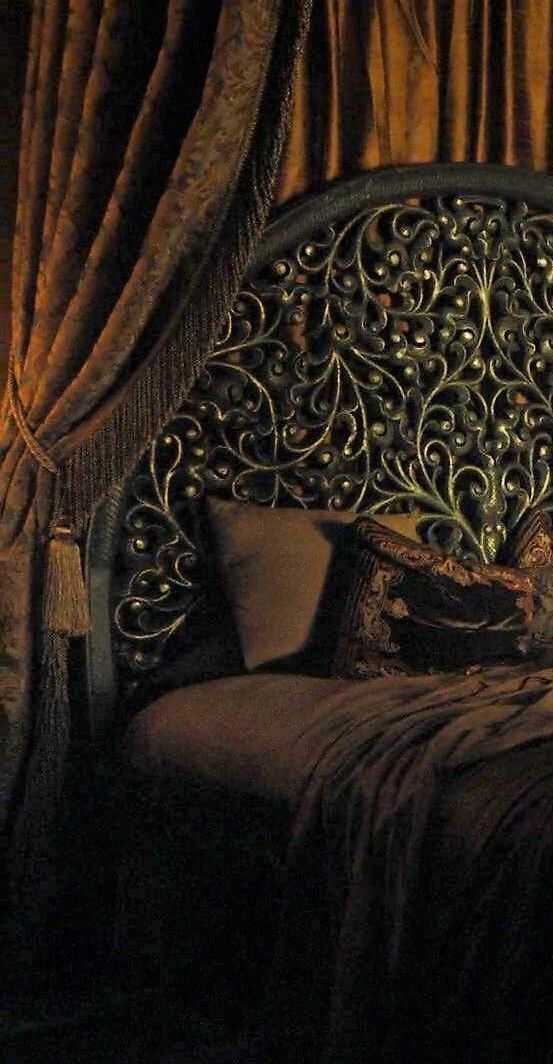

𝐂𝐞𝐫𝐲𝐬𝐞 𝐇𝐢𝐠𝐡𝐭𝐨𝐰𝐞𝐫
𝟷𝑠𝑡 𝑜𝑓 𝑀𝑎𝑒𝑔𝑜𝑟'𝑠 𝑤𝑖𝑣𝑒𝑠
ISTJ
Hufflepuff
Lawful Good
Libra Sun, Taurus Moon, Taurus Rising
The marriage between Ceryse and Maegor was heavily influenced by her father, Lord Manfred Hightower, as well as her uncle, who had been a High Septon during the reign of Aegon I.
The ceremony was held at the Starry Sept of Oldtown, with Ceryse's uncle, the High Septon, performing the rites. Ceryse was twenty-three, but Maegor was thirteen years old.
Maegor boasted of having consummated the marriage a dozen times the night of the wedding, and those who had seen the bedding agreed that Maegor was a lusty husband.
After years of trying, Maegor claimed that Ceryse was barren. He was fuelled by jealousy as he saw his brother already with five children. After the birth of Aenys's sixth child, Vaella, Maegor decided he needed another wife; one that could give him a child.
His choice was Alys Harroway and after the wedding, Maegor entered into a polygamous marriage. The High Septon demanded that Maegor should leave the "whore of Harroway" and return to Ceryse.
When Maegor was presented with choosing between setting Alys aside, or being exiled for five years, he chose exile and left for Pentos, leaving Ceryse behind in Westeros. Septon Murmison was tasked with making Ceryse fertile, but failed.
Ceryse eventually returned to her father in Oldtown.
Three years later, Maegor returned to claim the Iron Throne after his older brother's death, Aenys I. It was in that same year that Maegor married Tyanna of the Tower as his third wife.
Ceryse, still in Oldtown, claimed that she was still Maegor's only lawful queen.
The next year along with his mother, Maegor moved towards Oldtown, threatening to burn down the Starry Sept in retaliation to the High Septon's condemnation of the polygamous marriages.
Suddenly, the High Septon passed away before Maegor and Visenya could arrive. They spent six months in Oldtown, where Maegor reconciled with Ceryse.
With Ceryse's acceptance of Maegor's other two wives, Maegor in turn swore to restore Ceryse to all the rights, incomes, and privileges due her as lawful queen. They celebrated their reunion with a great feast and had a second consummation. She later returned to court at King's Landing.
The Red Keep was completed by the end of the year, however, Ceryse died of a sudden illness. It was rumoured she had offended Maegor and he ordered one of his Kingsuards to remove her tongue. Ceryse allegedly struggled so much that the knife slipped and her throat was deeply cut. Though never proven, this story was widely believed at the time.
#witchthewriter#witch the writer's moodboards#ceryse hightower#maegor the cruel#character info#character profile#house of the dragon#game of thrones#house targaryen#house hightower#house velaryon#balerion#aegon targaryen#rhaena targaryen#dreamfyre#maegor x ceryse
107 notes
·
View notes
Text

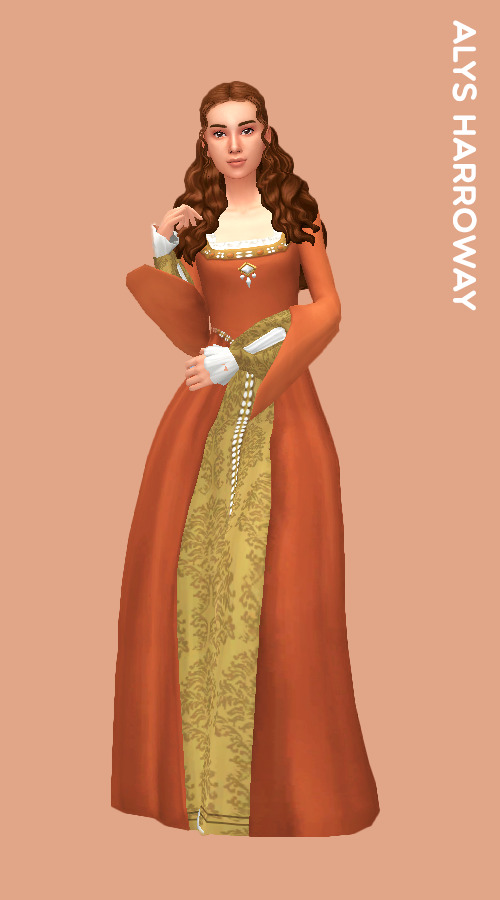

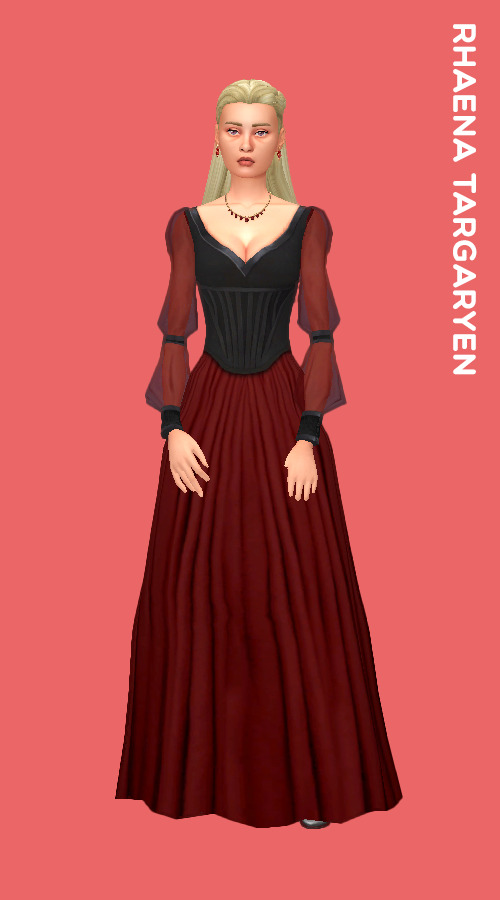
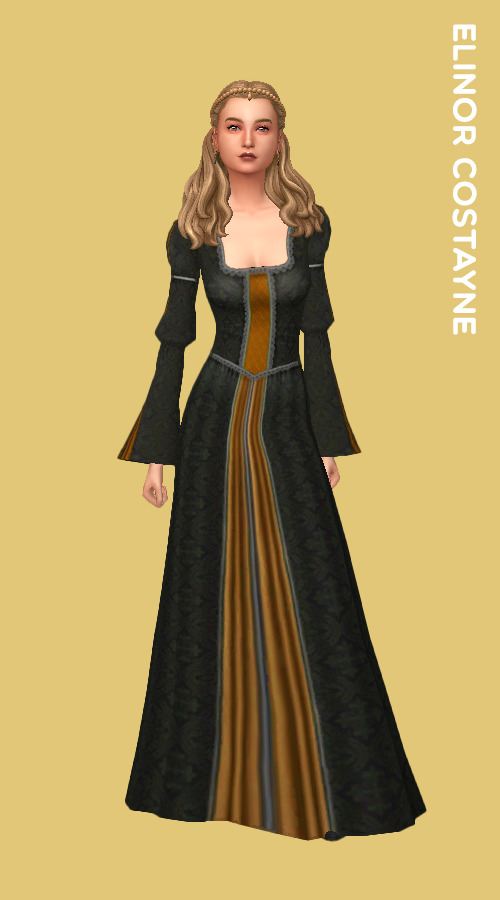

the six wives of king maegor the cruel
Queen Ceryse Hightower was a noblewoman from House Hightower and was the daughter of Lord Manfred Hightower of Oldtown. Her maternal uncle was one of the High Septons during the reign of King Aegon I Targaryen. She eventually married Prince Maegor Targaryen, becoming his first (of many) wives.
Queen Alys Harroway was a noblewoman from House Harroway during the reign of kings Aegon I, Aenys I and Maegor I Targaryen. She was the daughter of Lord Lucas Harroway of Harrenhal and Maegor's second wife.
Queen Tyanna of the Tower, also known as Tyanna of Pentos, was a courtesan from Pentos who married King Maegor I Targaryen, becoming the third of his six wives. Tyanna was a pale beauty with black hair the color of a raven. Her name may come from the fact that Pentos is known for its square brick towers. Tyanna is said to have dabbled in sorcery and alchemy. She is remembered as a black-hearted woman who was hated and feared.
Queen Rhaena Targaryen was forcefully married to her uncle, King Maegor I Targaryen, who had usurped and killed her husband Aegon, becoming one of his Black Brides. She had lively lilac eyes and silver-gold hair. At eighteen, Rhaena was considered brave, fierce and headstrong. As an adult, she was sometimes stern and sometimes shy, frequently brooding. Rhaena had no interest in other people's children, but was possessive of her own, and of people she loved. She was furious when betrayed, and scornful of those she did not trust.
Queen Elinor Costayne was a noblewoman from House Costayne and one of the many brides of King Maegor I Targaryen. Along with Lady Jeyne Westerling and Princess Rhaena Targaryen, she was one of the so-called "Black Brides".
Queen Jeyne Westerling was a member of House Westerling. She was one of the six wives of King Maegor I Targaryen. Jeyne was tall and slender, with lustrous brown hair.
descriptions by A Wiki of Ice and Fire
#asoiaf#asoiaf sims#a song of ice and fire#targaryen#house targaryen#maegor targaryen#maegor the cruel#ceryse hightower#alys harroway#tyanna of the tower#tyanna of pentos#rhaena targaryen#elinor costayne#jeyne westerling#house of the dragon#hotd#maegor i targaryen#game of thrones#game of thrones sims#targaryen sims project
59 notes
·
View notes
Note
A true unpopular opinion, but some Green fans need to acknowledge that House Hightower has always been unabashedly pro Targaryen in canon. They married three times into the Targs (Maegor with Ceryse, Alicent with Viserys 1, and Garmund with Rhaena). They sided with them against the Faith Militant, took the side of one branch of Targs in the Dance, and sided with Aerys II in Robert's Rebellion (Daenerys literally describes them as loyal to her family in the books).
I get that it's funny to poke fun at cringe Targ stans for hating the Hightowers *blood purity and bullshit 🙄* but it becomes much less of a dunk because House Hightower has always been canonically loyal to the Targaryens. Feel free to disagree with me, but that's just my opinion.
Oh, absolutely, this automatic rendering of the Hightowers as secret Targaryen-haters is faintly ridiculous. It was fine as a joke, but some people take it so seriously, when not even the Targaryens are completely demonised by the narrative. The text reads to me like they're supposed to be considered a mixed bag, with good and bad, culminating, of course, with the unspeakable cruelty of Aerys II and the justification for Robert's Rebellion. But, by some fans' reactions, you'd think GRRM intended every Targaryen ever created to be considered the devil incarnate - I really don't think that's the case.
IMO it's not that the Hightowers hate the Targaryens, it's just that they want to access some of their political power or even ingratiate themselves into the innermost circles. At the same they just generally seem to want to not die and live out their comfortable lives in their beautiful city, so sometimes you'll encounter some pretty ruthless pragmatism in their history in order to preserve that. I've written meta in the past on how I see their role in the narrative - it's clear that they will at least have some pretty important part to play in the upcoming battle for Oldtown.
Similarly, their association with the Faith of the Seven is very practical in nature - making friends within religious high circles is very often going to benefit you in some way, be it politically or even financially. I'm sure they're not faking their beliefs, but it's one thing to have normal religious beliefs for the era and instrumentalize them politically and it's one thing altogether to be a religious nutcase. Some Hightowers are said to have historically studied magic and necromancy, too, so they're periodically not bothered about being religious purists. In the books, Viserys was the one who decided to marry Aegon and Helaena, but the Hightowers were obviously not too bothered about the targcest, because they didn't put up a fight or express their reservations. Alicent herself was the one who proposed her own son be married to his half-sister. In the show, they made her wear this huge seven-pointed-star to telegraph more religious compliance than I think arose originally from the text.
I do have to add an explicatory note, though: the Hightowers didn't exactly side with Maegor during the Faith Militant's Rebellion. Their interest in this matter would have been for Ceryse to be considered his sole wife, which is why Ceryse's father, Manfred, protested to King Aenys about this issue. During this uprising, at some point Maegor, Visenya and their army (with their dragons) approached Oldtown. Initially, Martyn, Ceryse's brother, called his banners but it's likely that the might of the Targaryen host convinced him that the path of least resistance was to simply acquiesce, instead of getting burnt alive by Vhagar and Balerion. So it would be more a case of being strongarmed into supporting Maegor in this situation.
The period of Aerys II's reign in Hightower history has the potential to be very interesting, since, yes, they sided with Aerys, but the question is how much that decision was influenced by the fact that Gerold Hightower was the Lord Commander of the Kingsguard. How much sway did Ser Gerold hold over his nephew Lord Leyton? Did he essentially consider his uncle to be a hostage or just aligned himself out of solidarity with his political decisions? Did what happened during Robert's Rebellion have any bearing on his decision to later become a hermit? Personally, I would like to find out more about Ser Gerold's headspace and decision-making process during this time, because it could be an insightful exploration into the honour vs duty question, if GRRM is ever so inclined to give us more details - this goes for pretty much all members of Aerys II's Kingsguard, especially Arthur Dayne and Lewyn Martell.
26 notes
·
View notes
Photo
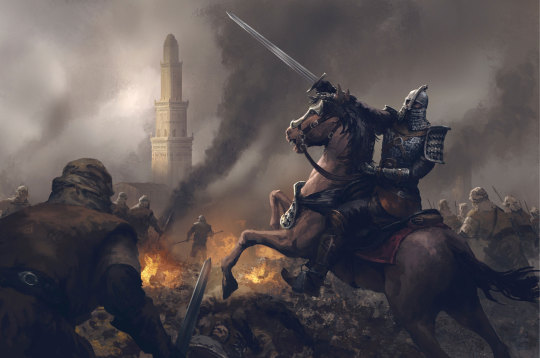
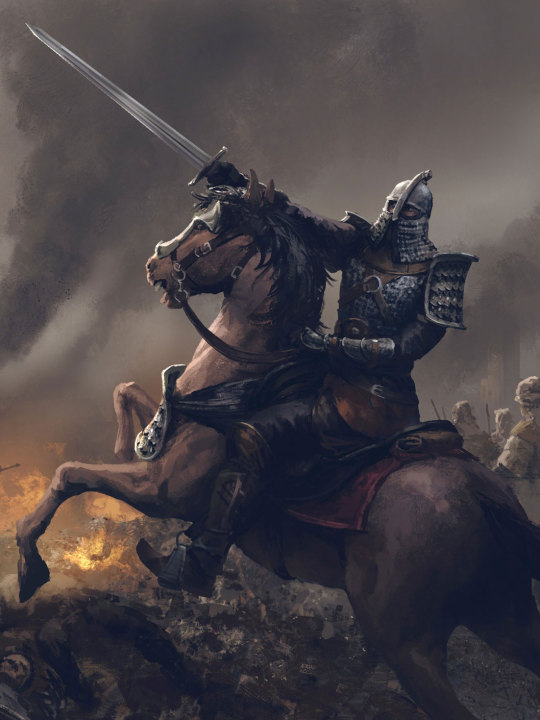
OLDTOWN ATTACKED
Artwork by Shen Fei
In 10 AC, the Dornish responded by sending two armies into the Reach. The first, led by Lord Fowler, captured the stormlands castle Nightsong, then held by Lord Caron. Lord Manfred Hightower of Oldtown responded by sending an army to Nightsong, led by his son, Ser Addam. And it was only then that the second Dornish army—led by Ser Joffrey Dayne—was deployed, attacking and burning villages, farms, and fields for sixty miles around the now mostly undefended Oldtown. Ser Joffrey killed Lord Hightower’s younger son, Garmon, when he attempted to lead a sortie. Meanwhile, by the time Ser Addam reached Nightsong, the castle had been abandoned, its garrison slaughtered, and Lord Caron and his family carried away as captives.
74 notes
·
View notes
Text
The Dance of the Two Hands (Appendix I)
Initial Supporters of the Line of Prince Manfred:
House Appleton
House Ashford
House Beesbury
House Blackbar
House Bulwer
House Caswell
House Chester
House Conklyn
House Cuy
House Florent
House Grimm
House Hewett
House Hunt
House Merryweather
House Osgrey of Coldmoat
House Osgrey of Leafy Lake
House Rowan
House Serry
House Stackhouse
House Tarly
House Webber
Initial Supporters of the Line of Prince Morgan:
House Ambrose
House Costayne
House Dunn
House Fossoway
House Graceford
House Hastwyck
House Hightower
House Leygood
House Manderly
House Mullendore
House Norcross
House Oakheart
House Orme
House Peake
House Risley
House Roxton
House Uffering
House Varner
Initially Neutral:
House Ball
House Bourney
House Corne
House Crane
House Cupps
House Footly
House Inchfield
House Meadows
House Osgrey of Standfast
House Redwyne
House Rhysling
House Rodden
House Strickland
House Vyrwel
Others:
Stormlands
House Caron
House Dondarrion
House Durrandon
House Selmy
House Swann
Dorne
House Dayne of Starfall
House Dayne of High Hermitage
House Fowler
Riverlands
House Shawney
House Strong
House Teague
Westerlands
House Crakehall
House Lannister of Casterly Rock
House Lannister of Lannisport
House Marbrand
House Reyne
House Swyft
House Tarbeck
House Westerling
#asoiaf worldbuilding#asoiaf fanfic#asoiaf#house gardener#the reach#house hightower#oldtown#highgarden
11 notes
·
View notes
Quote
As the glad tidings of Rhaena’s birth spread across the land, the realm rejoiced...save, perhaps, for Queen Visenya. Prince Aenys was the unquestioned heir to the Iron Throne, all agreed, but now an issue arose as to whether Prince Maegor remained second in the line of succession, or should be considered to have fallen to third behind the newborn princess. Queen Visenya proposed to settle the matter by betrothing the infant Rhaena to Maegor, who had just turned eleven. Aenys and Alyssa spoke against the match, however...and when word reached the Starry Sept, the High Septon sent a raven, warning the king that such a marriage would not be looked upon with favor by the Faith. His High Holiness proposed a different bride for Maegor: his own niece, Ceryse Hightower, maiden daughter to the Lord of Oldtown, Manfred Hightower (not to be confused with his grandsire of the same name). King Aegon, mindful of the advantages of closer ties with Oldtown and its ruling house, saw wisdom in the choice and agreed to the match.
Thus it came to pass that in 25 AC, Maegor Targaryen, Prince of Dragonstone, wed Lady Ceryse Hightower in the Starry Sept of Oldtown, with the High Septon himself performing the nuptials. Maegor was thirteen, the bride ten years his senior...but the lords who bore witness to the bedding all agreed that the prince made a lusty husband, and Maegor himself boasted that he had consummated the marriage a dozen times that night. “I made a son for House Targaryen last night,” he proclaimed as he broke fast.
Fire and Blood, by George R.R. Martin pg 55
#the sons of the dragon (F&b section)#maegor i#ceryse hightower#maegor and ceryse#visenya the conqueror#rhaena targaryen#rhaena targaryen (aenys' daughter)#aenys i#fire and blood quotes#asoiaf quotes#asoiaf#a song of ice and fire#Fire and Blood#the high septon#the faith of the seven#faith of the seven#asoiaf religion
15 notes
·
View notes
Text
The Conquest (Oldtown)
"Aegon turned south once more, marching toward Oldtown, whilst his two sisters mounted their dragons—Visenya for a second attempt at the Vale of Arryn, and Rhaenys for Sunspear and the deserts of Dorne.
The greatest city in all of Westeros, Oldtown was ringed about with massive walls and ruled by the Hightowers of Hightower, the oldest, richest, and most powerful of the noble houses of the Reach. Oldtown was also the center of the Faith. "
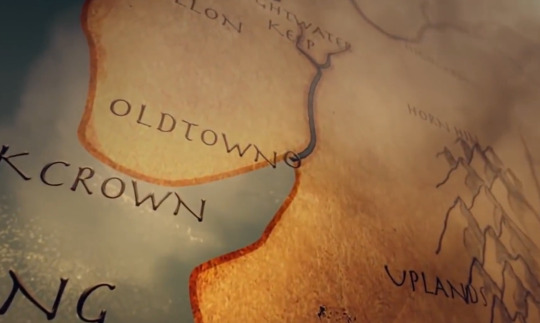



"Yet when Aegon Targaryen and his host approached Oldtown, they found the city gates open, and Lord Hightower waiting to make his submission.
When the High Septon told him of the vision vouchsafed him by the Crone, Lord Hightower determined that he would not oppose the Conqueror by force of arms. Thus it was that no men from Oldtown burned on the Field of Fire, though the Hightowers were bannermen to the Gardeners of Highgarden. And thus it was that Lord Manfred rode forth to greet Aegon the Dragon as he approached, and to offer up his sword, his city, and his oath.
Three days later, in the Starry Sept, His High Holiness himself anointed Aegon with the seven oils, placed a crown upon his head, and proclaimed him Aegon of House Targaryen, the First of His Name, King of the Andals, the Rhoynar, and the First Men, Lord of the Seven Kingdoms, and Protector of the Realm."
Aegon Targaryen (The Conqueror)
#asoiaf#conquest#house of the dragon#hotd#game of thrones#aegon the conqueror#oldtown#house hightower#alicent hightower#house targaryen
41 notes
·
View notes
Text
Birthdays 1.11
Beer Birthdays
John Holl (1980)
Five Favorite Birthdays
Reinhold Gliere; composer (1875)
Alexander Hamilton; politician, founding father (1755 or 57)
Jim Hightower; writer, former agriculture commissioner (1943)
Albert "Abbie" Hofmann; LSD discoverer (1906)
Alice Paul; suffragist (1885)
Famous Birthdays
Mary J. Blige; pop singer (1971)
Jean Chretien; Canadian politician (1934)
Clarence Clemons; rock saxophonist (1942)
Ezra Cornell; college founder (1807)
Ben Crenshaw; golfer (1952)
Darryl Dawkins; Philadelphia 76ers C (1957)
William James; psychologist, writer (1842)
Naomi Judd; actor (1946)
Christine Kaufmann; actor (1945)
Tony Kaye; rock musician (1946)
Manfred Lee; mystery writer, "Ellery Queen" (1905)
John MacDonald; 1st Canadian PM (1815)
Jack Nimitz; jazz saxophonist (1930)
Alan Paton; novelist (1903)
Amanda Peet; actor (1972)
Vicki Peterson; rock musician (1958)
Lee Ritenour; jazz guitarist (1952)
Carroll Shelby; auto racer (1923)
William "Intrepid" Stephenson; Canadian spy (1897)
Rod Taylor; actor (1930)
Grant Tinker; television executive (1925)
David L. Wolper; film producer (1928)
0 notes
Text
1 note
·
View note
Text
The men of the red dragon call themselves the loyalists, but we who chose the black were just as loyal, once.
. . . if Hightower and Tarbeck and Oakheart and Butterwell had lent us their full strength instead of trying to keep one foot in each camp . . . if Manfred Lothston had proved true instead of treacherous . . .
...sweetie,
1 note
·
View note
Photo
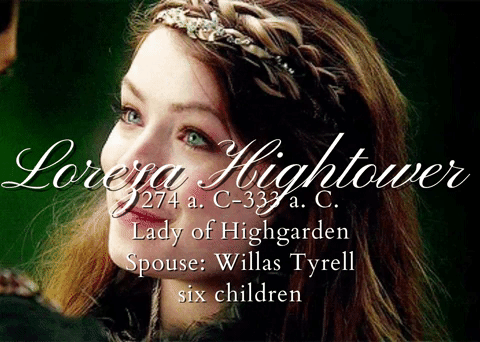





The couple had three children, but also a large number of grandchildren:
Loreza Hightower- she was Lady of Highgarden by marrying her cousin, Willas Tyrell.
She was considered beautiful with long brown hair and bright eyes inherited from her paternal family. She is sweet and adventurous being a very pretended young woman, but her parents wanted a good marriage for her.
In 289 a. C., a marriage was negotiated between the heir of Highgarden, Willas Tyrell and Loreza, both were 15 years old when the agreement was signed and the girl undertook her journey to Altojardín where she was well received by her mother-in-law and aunt, Alerie Hightower and her mother-in-law, Olenna Redwyne. The wedding took place in 290 a. C., Willas treated his wife with respect whom he quickly fell in love with and Loreza loved him too.
Loreza gained the appreciation of her brothers-in-law, Garlan and Loras, but she had a tumultuous relationship with her sister-in-law Margaery, both had a certain rivalry and used to criticize each other. It wasn't until Margaery was engaged to Lord Jaime Lannister and had to leave for Casterly Rock, great news for Loreza that she only saw her sister-in-law on a few occasions.
In 310 a. C., her mother and her daughter, Jeyne, passed away, these deaths being a great blow to Loreza that she never recovered from the loss of her beloved mother and her little girl.
In 311 a. C., her father-in-law Mace Tyrell and her father, Baelor Hightower, pass away, being another blow after the sudden death of her mother and daughter.
Loreza and her husband become Lords of Highgarden. In the role of her as Mistress, she was an animal lover building some shelters, she also helped her husband with some problems in politics by achieving an alliance between the Tyrells and the Freys.
In the year 331 a. C., Willas Tyrell died after a hunting party and her death destroyed Loreza even more, plunging into a great depression for losing her parents, her husband and her young daughter, closing herself in herself. Two years later, Loreza, sick with tuberculosis, fearing for her life, and two months later, she died at the age of 59.
Willas Tyrell- He was Lord of Highgarden and Lord of the Domain at the death of his father, being considered a generous man and breeder of all kinds of animals.
He married Loreza Hightower, her maternal cousin, and he had a happy marriage with her, both of them very much in love with each other. Loreza was of great help to Willas with some alliances with other royal houses, among them the Freys.
Mace Tyrell passed away in 311 a. C., becoming Mace the new Dominion Lord. His lordship was called "kingdom of fauna" because of the breeding of hawks, horses and other animals that Willas and Loreza were raising.
He also stood out for his commercial relations, reaching a peace with the Lannisters after the marriage of his sister, Margaery with Jaime Lannister.
In 331 a. C., after a hunting party with his sons, Willas' horse had a terrible fall and the man was left under the horse that broke several bones with the weight of him. He was rushed to his home where within hours he died from his injuries at 57 years of age and his wife, Loreza, would pass away just two years after he was buried together.
The couple had six children and only one would die in infancy:
Lady Alerie Tyrell, she was the second wife of Alyn Ambrose with whom she had three children. Five years later, she was widowed and married Lucas Tyrell, with whom she had two daughters.
Lord Lambelle Tyrell, was Lord of Highgarden after the death of his parents and also Counselor of the Edicts of King Rhaegar I Targaryen. He married Walda Frey "la Blanca" and they had two children.
Lord Donnel Tyrell was Lord Consort of the Blackcrown when he married Alysanne Bulwer and with her he had ten children, the first five of which bore the surname "Bulwer".
Olenna Tyrell, she was lady of the Arbor by marrying Horas Redwyne, her cousin whom she hated and they had no children. Olenna widowed in 319 a. C., and she married for the second time with the somewhat older Ronnet Connington being a better marriage and they had three children.
Elia Tyrell, was Septa of the Faith of the Seven in Antigua.
Jeyne Tyrell passed away in her childhood the same year as her grandmother, Elia Martell of her being buried alongside her in Oldtwon.
Manfred Tyrell- He was Lord of the Oldtown after the death of his father. He was known as a Dornish-looking but very attractive young man, captivating many women who wished to marry his.
He married Desmera Redwyne in 299 a. C., both got along well even though there was no love between them, but Manfred always had his wife in mind for everything, being his great support both at work and in personal life.
During her marriage she had a few lovers, but the most famous was Walda Frey "The Beauty" who was Walder Frey's great-granddaughter and she was with her for two years, but Walda was engaged to another man ending her romance.
Manfred kept in his protection some artists including painters, dancers, actors and writers achieving a cultural impact in the Domain. He was also known for his conflicts with the Faith over different religious issues such as the priests or the followers of the God R'hllor whom Manfred accepted into his court for a few years.
Manfred's life had a severe setback when in 320 a. C., her wife, Desmera Redwyne, died of an infection after cutting her hand with a hunting arrow. The death of her wife was (surprisingly) a severe blow to the Lord of the Lighthouse and he went so far as to tell Maester Normund Tyrell how much this death affected him, referring to her as "my sweet and brilliant Desmera."
Thirteen years later, his older sister, Loreza, would die another hard blow for him.
Manfred Hightower would end up dying in 339 a. C., with 61 years of respiratory attacks in his bedroom. He was buried alongside his parents and his wife.
Desmera Redwyne- she was Lady of the Oldtown by marrying Manfred Hightower who was one of her distant cousins.
The engagement was made in 297 a. C., and the wedding was celebrated two years later in Oldtown being a colorful ceremony. The couple liked each other from the first moment and had a great friendship, although they never became in love, but it is known that Manfred came to show affection to his wife.
Desmera did not get involved in the lordship of Oldtown only dedicating himself to gardening, sewing and her children who little by little were reaching the world. The lady of the Lighthouse was little known, but those closest to her describe her as charming, maternal and calm, even her husband described her as sweet and conciliatory being her shoulder to cry on.
Her life remained quiet until one day in 320 a. C., while she was in a hunting party with her husband and her children, Desmera was wounded with an arrow in her arm, bleeding a lot. The maesters looked for a way to help her by closing her wound, but her seams were badly done and she opened again bleeding more.
In the end, Desmera Redwyne died that same year of a wound infection, at the age of 37. Her death was a severe blow to her children and to Manfred who did not remarry, keeping the memory of his wife and his best friend.
Desmera bore Manfred three healthy children:
Lord Garmond Hightower, was Lord of the Lighthouse, of the Port and defender of the Citadel at the death of his father. He married Janei Lannister three times, who gave him a daughter; He in second marriages with Jeyne Westerling without children and in third marriages with the widow Joyeuse Erenford with her he had two sons.
Lady Lily Hightower, married Martyn Lannister and with him she had a daughter, Rowena.
Lady Minisa Hightower, remained single, became elderly and was the caregiver of her nephews and great-nephews.
Addam Tyrell- she was the right hand of her older brother Manfred hers and a skilled banker managing to create her own bank, but it was sold after only three generations.
At first, he wanted to marry one of his cousins, Elinor or Alla Tyrell, but they were already engaged and his cousin Megga Tyrell remained, who was stout and unbearable singing, but he agreed to marry her because according to her uncle, Humfrey Hightower : "Fat women are more pleasant."
The wedding took place in 300 a. C., being a bittersweet event and Megga tried to get the attention of her husband. On their wedding night, Addam admitted that he had enjoyed the company of his new wife and that he wanted to share a bed with her again soon.
Megga bore him a total of nine children and Addam especially loved her sons, while her wife loved her daughters more. Her favorite son was Galadon, to whom he inherited his bank and some jewels to his other children.
Addam watched his entire family die little by little starting with his mother and ending with his older brother, Manfred, to whom he was always attached.
The deaths of her family were a severe blow, but she remained strong so as not to decay and perish.
After the death of his parents, Addam visited his maternal relatives along with his family being united with his uncle Oberyn Martell who was very sorry for the death of his sister.
The visits were continuous, sometimes staying five months in Dorne. During one of these visits in 344 a. C., Addam did not realize that there was a rattlesnake in his bedroom and it bit his neck while he slept. The venom of the snake was lethal and Addam died in a matter of minutes, while they tried to save his life by dying at 60 years of age.
Megga Tyrell- she was Margaery Tyrell's companion when she traveled to Casterly Rock to marry Jaime Lannister. She shortly after she returned to the Highgarden where she married Addam Hightower.
Despite her robust appearance and less handsome than her other cousins, Addam Tyrell agreed to marry her because her other cousins were engaged to marry in early 300 a. C., Megga became pregnant and gave birth to her first daughter, Lysa Tyrell.
The couple was very passionate enjoying both the bed and the flirtations, Megga continued to give him more children something that was well liked by her brother-in-law, Manfred Hightower to ensure the offspring of the Hightower House.
Megga was not very motherly leaving her children in charge of wet nurses or nannies, but it is known that she had a soft spot for her daughters seeking good marriages or positions within the Targaryen court.
In 344 her husband Addam died after being bitten by a snake during a visit to Dorne. Megga became a wealthy widow and settled in a house near Highgarden where she spent her money on treats and gifts for her favorite grandchildren.
Megga gained much more weight in those years and she could hardly get up being helped by her servants. One day in the year 364 a. C., Megga suffered several heart attacks that were getting stronger and stronger until her heart stopped, thus passing away that same year at 78 years of age.
The couple was very passionate and had nine children:
Lysa Hightower, was the wife of Ben Bushy to whom she bore a son, Baltasar Bushy.
Luthor Hightower, died during childhood of tuberculosis.
Galadon Hightower, was the second owner of Tower Bank inherited by his father. He married Talla Tarly and they had an only child.
Talisa Hightower, was a prostitute behind the back of her parents, but after being discovered she was forced to become a Septa.
Sarra Hightower, Septa of the Faith of the Seven in Antigua.
Melissa Hightower, married Victarion Greyjoy being his third wife and gave him four sons.
Mace Hightower, Maester, Astrologer, and Alchemist.
Alyssa Hightower, joined the Silent Sisters.
Victaria Hightower, married Edric Dayne and bore him four children.
Jonnel Hightower, died during adolescence after receiving a sword blow to the head.
La pareja tuvieron tres hijos, pero también una gran cantidad de nietos:
Loreza Hightower- Fue Señora de Altojardín al casarse con su primo, Willas Tyrell.
Era considerada bella de largos cabellos castaños y ojos brillantes heredados de su familia paterna. Dulce y aventurera siendo una joven muy pretendida, pero sus padres querían un buen matrimonio para ella.
En 289 d. C., se negocio un matrimonio entre el heredero de Altojardín, Willas Tyrell y Loreza, ambos tenían 15 años de edad cuando se seño el acuerdo y la chica emprendió su viaje hacia Altojardín donde fue bien recibida por su suegra y tía, Alerie Hightower y la suegra de esta, Olenna Redwyne. La boda se celebro en 290 d. C., Willas trato con respeto a su esposa de la cual se enamoro rápidamente y Loreza también lo amo.
Loreza se gano el apreció de sus cuñados, Garlan y Loras, pero tuvo una relación tumultuosa con su cuñada Margaery, ambas tenían cierta rivalidad y solían criticarse. No fue hasta que Margaery fue comprometida con Lord Jaime Lannister y tuvo que partir a Roca Casterly, siendo una gran noticia para Loreza que solo veía a su cuñada en pocas ocasiones.
En 310 d. C., falleció su madre y su hija, Jeyne siendo estas muertes un gran golpe para Loreza que nunca se recupero de la perdida de su querida madre y su pequeñita.
En 311 d. C., fallece su suegro Mace Tyrell y su padre, Baelor Hightower siendo otro duro golpe tras la repentina muerte de su madre e hija.
Loreza y su marido se convierten en Señores de Altojardín. En su papel como Señora fue una amante de los animales construyendo algunos refugios, también ayudo a su marido con algunos problemas en la política logrando una alianza entre los Tyrell y los Frey.
En el año 331 d. C., falleció Willas Tyrell tras una partida de caza y su muerte destrozo aun mas a Loreza sumiéndose en una gran depresión por perder a sus padres, su marido y su hija pequeña, encerrándose en ella misma. Dos años después Loreza enfermo de tuberculosis temiéndose por su vida y dos meses después falleció a la edad de 59 años.
Willas Tyrell- Fue Señor de Altojardín y Señor del Dominio a la muerte de su padre, siendo considerado un hombre generoso y criador de todo tipo de animales.
Se caso con Loreza Hightower, su prima materna y con ella tuvo un matrimonio dichoso estando ambos muy enamorados el uno del otro. Loreza fue de gran ayuda para Willas con algunas alianzas con otras casas reales, entre ellas los Frey.
Mace Tyrell falleció en 311 d. C., convirtiéndose Mace en el nuevo Señor del Dominio. Su señorío fue llamo “reino de la fauna” por la crianza de halcones, caballos y otros animales que Willas y Loreza estuvieron criando.
También se destaco por sus relaciones comerciales llegando una paz con los Lannister tras el casamiento de su hermana, Margaery con Jaime Lannister.
En 331 d. C., tras una partida de caza junto a sus hijos, el caballo de Willas tuvo una terrible caída y el hombre quedo abajo del caballo que le rompió varios huesos con su peso. Fue llevado rápidamente hasta su hogar donde en cuestión de horas falleció por sus heridas a los 57 años de edad y su esposa, Loreza fallecería solo dos años después que el siendo enterrados juntos.
La pareja tuvo seis hijos y solo uno fallecería durante la infancia:
Lady Alerie Tyrell, fue la segunda esposa de Alyn Ambrose con el cual tuvo tres hijos. Cinco años después enviuda y se casa con Lucas Tyrell con el cual tuvo dos hijas.
Lord Lambelle Tyrell, fue Señor de Altojardín tras la muerte de sus padres y también Consejero de los Edictos del rey Rhaegar I Targaryen. Se caso con Walda Frey “la Blanca” y tuvieron dos hijos.
Lord Donnel Tyrell fue Señor consorte de Corona Negra al casarse con Alysanne Bulwer y con ella tuvo diez hijos los cuales los cinco primeros portaron el apellido “Bulwer”.
Olenna Tyrell, fue Señora del Rejo al casarse con Horas Redwyne, su primo al cual odiaba y no tuvieron hijos. Olenna enviuda en 319 d. C., y se caso por segunda vez con el algo mayor Ronnet Connington siendo un mejor matrimonio y tuvieron tres hijos.
Elia Tyrell, fue Septa de la Fe de los Siete en Antigua.
Jeyne Tyrell falleció en la infancia el mismo año que su abuela, Elia Martell siendo enterrada junto a ella en Antigua.
Manfred Tyrell- Fue Señor del Faro tras la muerte de su padre. Era conocido como un joven de aspecto dorniense, pero muy atractivo cautivando a muchas mujeres que deseaban desposarse con el.
Se caso con Desmera Redwyne en 299 d. C., ambos se llevaron bien aun que no había amor entre ellos, pero Manfred siempre tuvo presente a su esposa para todo siendo su gran apoyo tanto en el trabajo como en la vida personal.
Durante su matrimonio tuvo unas cuantas amantes, pero la mas famosa fue Walda Frey “La Bella” que era bisnieta de Walder Frey y con ella estuvo durante dos años, pero Walda fue comprometida con otro hombre acabando su romance.
Manfred mantuvo en su protección algunos artistas entre ellos pintores, bailarines, actores y escritores logrando un impacto cultural en el Dominio. También era conocido por sus conflictos con la Fe por distintos tema religiosos como los sacerdotes o los seguidores del Dios R'hllor a los cuales Manfred acepto en su corte por unos años.
La vida de Manfred tuvo un duro revés cuando en 320 d. C., falleció su esposa, Desmera Redwyne de una infección tras cortarse la mano con una flecha de caza. La muerte de su esposa fue (sorprendentemente) un duro golpe para el Señor del Faro y llego a decirle al maestre Normund Tyrell lo mucho que le afecto esta muerte refiriéndose a ella como “mi dulce y brillante Desmera”.
Tan trece años después fallecería su hermana mayor, Loreza otro duro golpe para el.
Manfred Hightower acabaría falleciendo en 339 d. C., con 61 años de ataques respiratorios en su dormitorio. Fue enterrado junto a sus padres y su esposa.
Desmera Redwyne- Fue Señora del Faro al casarse con Manfred Hightower que era uno de sus primos lejanos.
El compromiso se realizo en 297 d. C., y la boda se celebro dos años después en Antigua siendo una ceremonia colorida. La pareja se agrado desde el primer momento y tuvieron una gran amistad, aun que nunca llegaron a estar enamorados, pero se sabe que Manfred llegaba a darle muestras de cariño a su esposa.
Desmera no se involucro en el señorío de Antigua solo dedicándose a la jardinería, a la costura y a sus hijos que poco a poco iban llegando al mundo. La señora del Faro era poco conocida, pero sus mas cercanos la describen como encantadora, maternal y tranquila, incluso su marido la describió como dulce y conciliadora siendo su hombro en el que llorar.
Su vida siguió siendo tranquila hasta que un día del 320 d. C., mientras estaba en una partida de caza junto a su marido e hijos, Desmera fue herida con una flecha en su brazo sangrando mucho. Los maestres buscaron una forma de ayudarla cerrando la herida, pero las costuras fueron mal hechas y volvió abrirse sangrando mas.
Al final Desmera Redwyne acabo muriendo ese mismo año de una infección por la herida, a los 37 años de edad. Su muerte fue un duro golpe para sus hijos y para Manfred que no se volvió a casar, manteniendo el recuerdo de su esposa y su mejor amiga.
Desmera le dio tres hijos sanos a Manfred:
Lord Garmond Hightower, fue Señor del Faro, del Puerto y defensor de la Ciudadela a la muerte de su padre. Se caso en tres ocasiones con Janei Lannister que le dio una hija; En segundas nupcias con Jeyne Westerling sin hijos y en terceras nupcias con la viuda Joyeuse Erenford con ella tuvo dos hijos varones.
Lady Lily Hightower, se caso con Martyn Lannister y con el tuvo una hija, Rowena.
Lady Minisa Hightower, permaneció soltera, llego a anciana y fue la cuidadora de sus sobrinos y sobrinos nietos.
Addam Tyrell- Fue la mano derecha de su hermano mayor Manfred y un experto banquero logrando crear su propio banco, pero este fue vendido tras solo tres generaciones.
En un principio quería casarse con una de sus primas, Elinor o Alla Tyrell, pero estas ya estaban comprometidas y quedaba su prima Megga Tyrell, que era corpulenta y de canto insoportable, pero accedió a casarse con ella por que según su tío, Humfrey Hightower: “Las gordas son mas placenteras”.
La boda se celebro en 300 d. C., siendo un acontecimiento agridulce y Megga trataba de llamar la atención de su marido. En la noche de bodas Addam admitió que había disfrutado de la compañía de nueva esposa y que deseaba volver a compartir la cama con ella pronto.
Megga le dio un total de nueve hijos y Addam quiso especialmente a sus hijos, mientras que su esposa quiso mas a sus hijas. Su hijo favorito fue Galadon al cual le heredero su banco y a sus otros hijos algunas joyas.
Addam vio a toda su familia morir poco a poco empezando con su madre y finalizando con su hermano mayor, Manfred al cual siempre estuvo unido.
Las muertes de su familia fueron un duro golpe, pero se mantuvo fuerte para no decaer y fallecer.
Tras la muerte de sus padres, Addam visitaba a sus familiares maternos junto a su familia estando unido a su tío Oberyn Martell el cual estaba muy apenado por la muerte de su hermana.
Las visitas fueron continuas permaneciendo a veces cinco meses en Dorne. Durante una de estas visitas en 344 d. C., Addam no se percato de que había una serpiente de cascabel en su alcoba y esta le mordió el cuello mientras dormía. El veneno de la serpiente fue letal y Addam falleció en cuestión de minutos, mientras le trataban de salvar la vida falleciendo con 60 años de edad.
Megga Tyrell- Fue dama de compañía de Margaery Tyrell cuando esta viajo a la Roca Casterly para casarse con Jaime Lannister. Poco después volvió a la Altojardín donde se caso con Addam Hightower.
Pesé a su aspecto robusto y menos agraciado que el de sus otras primas, Addam Tyrell accedió a casarse con ella por que sus otras primas estaban prometidas casándose a principios del 300 d. C.. La noche de bodas fue un éxito y Addam admitió que le gusto compartir el lecho con Megga.
Durante la noche de bodas, Megga se quedo embarazada y dio a luz a su primera hija, Lysa Tyrell.
La pareja fue muy apasionada disfrutando ambos la cama y los coqueteos, Megga siguió dándole mas hijos algo que era bien visto por su cuñado, Manfred Hightower para asegurar la descendencia de la Casa Hightower.
Megga no fue muy maternal dejando a sus hijos a cargo de las nodrizas o niñeras, pero se sabe que tenía debilidad por sus hijas buscándoles buenos matrimonios o puestos dentro de la corte Targaryen.
En 344 falleció su esposo Addam tras ser mordido por una serpiente durante una visita hacia Dorne. Megga se convirtió en una viuda rica y se instalo en una casa cerca de Altojardín donde gastaba su dinero en caprichos y regalos para sus nietos favoritos.
Megga engordo mucho mas en esos años y a penas podía levantarse siendo ayudada por sus criados. Un día del año 364 d. C., Megga sufrió varios ataques en el corazón que cada vez eran mas fuerte hasta que su corazón se detuvo falleciendo así ese mismo año con 78 años de edad.
La pareja fue muy apasionada y llegaron a tener nueve hijos:
Lysa Hightower, fue la esposa de Ben Bushy al cual le dio un hijo, Baltasar Bushy.
Luthor Hightower, falleció durante la infancia de tuberculosis.
Galadon Hightower, fue el segundo dueño del Banco Tower heredado por su padre. Se caso con Talla Tarly y tuvieron un unico hijo.
Talisa Hightower, fue una meretriz a espaldas de sus padres, pero tras ser descubierta fue obligada a convertirse en Septa.
Sarra Hightower, septa de la Fe de los Siete en Antigua.
Melissa Hightower, se caso con Victarion Greyjoy siendo su tercera esposa y le dio cuatro hijos varones.
Mace Hightower, maestre, astrologo y alquimista.
Alyssa Hightower, se unió a las Hermanas Silenciosas.
Victaria Hightower, se caso con Edric Dayne y le dio cuatro hijos.
Jonnel Hightower, falleció durante la adolescencia tras recibir un golpe de espada en la cabeza.
#elia martell#baelor hightower#loreza hightower#manfred hightower#addam hightower#desmera redwyne#Megga Tyrell#willas tyrell
39 notes
·
View notes
Text
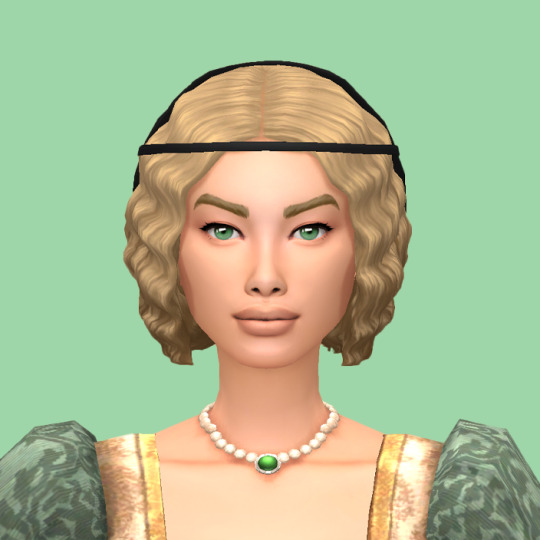





the six wives of king maegor the cruel - portraits
Queen Ceryse Hightower was a noblewoman from House Hightower and was the daughter of Lord Manfred Hightower of Oldtown. Her maternal uncle was one of the High Septons during the reign of King Aegon I Targaryen. She eventually married Prince Maegor Targaryen, becoming his first (of many) wives.
Queen Alys Harroway was a noblewoman from House Harroway during the reign of kings Aegon I, Aenys I and Maegor I Targaryen. She was the daughter of Lord Lucas Harroway of Harrenhal and Maegor's second wife.
Queen Tyanna of the Tower, also known as Tyanna of Pentos, was a courtesan from Pentos who married King Maegor I Targaryen, becoming the third of his six wives. Tyanna was a pale beauty with black hair the color of a raven. Her name may come from the fact that Pentos is known for its square brick towers. Tyanna is said to have dabbled in sorcery and alchemy. She is remembered as a black-hearted woman who was hated and feared.
Queen Rhaena Targaryen was forcefully married to her uncle, King Maegor I Targaryen, who had usurped and killed her husband Aegon, becoming one of his Black Brides. She had lively lilac eyes and silver-gold hair. At eighteen, Rhaena was considered brave, fierce and headstrong. As an adult, she was sometimes stern and sometimes shy, frequently brooding. Rhaena had no interest in other people's children, but was possessive of her own, and of people she loved. She was furious when betrayed, and scornful of those she did not trust.
Queen Elinor Costayne was a noblewoman from House Costayne and one of the many brides of King Maegor I Targaryen. Along with Lady Jeyne Westerling and Princess Rhaena Targaryen, she was one of the so-called "Black Brides".
Queen Jeyne Westerling was a member of House Westerling. She was one of the six wives of King Maegor I Targaryen. Jeyne was tall and slender, with lustrous brown hair.
descriptions by A Wiki of Ice and Fire
#asoiaf#asoiaf sims#targaryen sims project#targaryen sims#rhaena targaryen#elinor costayne#jeyne westerling#tyanna of the tower#alys harroway#ceryse hightower#house targaryen#house hightower#house harroway#house westerling#house costayne#pentos#tyanna of pentos#maegor the cruel#maegor targaryen#black bride
33 notes
·
View notes
Note
Except Aegon annexed large portions of the riverlands & stormlands for his crownlands. So Edmyn's early fealty & loyal half-brother Orys' prowess only counted for so much. Why not carve off the very northernmost part of the Reach, extending the crownlands to the westerlands border? Your point would stand if Aegon had made likewise submitter Manfred a LP at Harlen's expense; with the Florents, Redwynes, etc. becoming Oldtown's vassals. Region-wise, Harlen came out far better than Edmyn or Orys.
Not necessarily, and they weren't really large portions - Crackclaw Point was never in the Riverlands, instead a land of perennial feuding petty fiefdoms. Rosby and Duskendale swore fealty to Aegon after being beaten in combat, but before meeting with Edmyn. That fits with Aegon's pattern and offers an enticing alternative to fighting him in open combat; Edmyn brings him the Riverlands so the Riverlands goes to him. The Masseys supported the Targaryen over House Durrandon due to familial ties, so it makes sense to include it in Aegon's own royal demense rather than force him to serve under Orys. Manfred Hightower didn't submit until Aegon came to him in Oldtown, after Harlan had already surrendered and turned Highgarden over to him; Aegon's not going to prefer Manfred Hightower who sat out the war until it came to him as opposed to Harlan Tyrell who openly sought him out to swear fealty.
As for why not do that, it's because that establishes precedent that Aegon can and will peel off lands that he wants, making it less likely that others will surrender to him peacefully. Also, from a practical perspective, that would be a long line of castles to manage and pissed off vassals to deal with.
Thanks for the question, Anon.
SomethingLikeALawyer, Hand of the King
20 notes
·
View notes
Text
The Dance of the Two Hands: Its Origin and Conclusion
PART I
The Dance of the Two Hands, as mummers and singers alike have dubbed that most heinous conflict maesters prefer to call the Hundred Years War*, can trace its roots back to the reign of King Titus III Gardener, who ruled the Reach more than a thousand years before Aegon Targaryen began his conquest of Westeros.
*As Maester Myrddin noted somewhat dryly in his history, Lords and Ladies of the Dance: Their Lives and Deaths, the war actually lasted ninety-eight years.
Titus III came to sit upon the Oakenseat under less than auspicious circumstances. The Winter Sickness had trimmed the line of House Gardener down to just two branches*. Moreover, recent defeats had seen Nightsong ceded back to the Storm Kings and Cornfield back to the Kings of the Rock. Worst of all by far though, Titus III found his vaults empty and he himself indebted to, amongst others*, the Starry Sept. A man decisive in thought as well as action, Titus III moved swiftly to address each of these issues, beginning with the matter of succession. His Grace took Lady Rhea Fossoway to wife whilst his brother, Prince Tristan, was wed to Lady Yseult Lannister*, the later in exchange for forgiveness of a loan lent to their late father, Boniface I. By the Lady Rhea, His Grace had the following children:
Bertrand II Gardener
Manfred Gardener
Morgan Gardener, twin to Manfred
Myrielle Gardener, wed to Lord Martyn Redwyne and had issue
*The only other survivor amongst the royal family was the king’s elderly cousin, Princess Henrietta, who had joined the Silent Sisters forty years prior to his birth.
*Of the Lannisport branch.
When Queen Rhea died of a summer fever, Titus III, though saddened, quickly remarried. His choice this time was Lady Clarice Oakheart. In this Titus III was no doubt motivated by growing tensions with the new King of the Rock, Lorimar I*. Together, they had the following children:
Ceryse Gardener*, wed to Lord Amaury Crakehall* and had issue
Malora Gardener, wed first to Lord Uther Leygood, then to Lord Theobald Manderly, and lastly to Lord Tancred Peake, had issue by all three*
*Known later in life as “the Leper King” and “the Masked Monarch.”
*Became a septa at the great motherhouse in Lannisport upon her husband’s death.
*Second son of Lord Joffrey Crakehall, who joined the Warrior’s Sons upon his wife’s death and rose to the position of Grand Captain**.
**In that capacity, he led a campaign against the Iron Isles, thereby freeing hundreds of thralls.
*This led to a rare instance of amiability between Dunstonbury and Starpike.
Titus III later perished of the bloody flux whilst warring with the Storm King and his Dornish allies*. (By this point, Queen Clarice had herself already passed away of a winter chill.)
*An alliance sealed by the marriage of the Storm King’s heir (Prince Durran Durrandon) to Princess Ysabel Yronwood.
PART II
Upon ascending the throne, King Bertrand II proved his mettle by avenging his father in a most spectacular manner. Leading ten thousand hastily-gathered men on a series of forced marches, he took the combined Stormlander-Dornish army by surprise as it sat encamped beneath the walls of Ashford. In the rout that followed, the Storm King was captured along with a dozen lords and threescore knights. As a result of this great feat, singers* began calling him “Bertrand the Bold” and “Bertrand Stormquencher.”
*Their verses tend to omit the finer details, such as the ruinous ransoms Bertrand II used to build additional riverine defenses.
To celebrate this victory and the peace it brought, Bertrand II hosted a great ball at Highgarden. Amongst the attendees was Lady Alyce Hightower*, the unwitting source of so much woe to come.
*The daughter and only child of Lord Hugor Hightower by his lady wife, Desdemona Dayne, who he wed to end a feud** between Ser Iago Dayne, Sword of the Morning, and his vassal, Lord Robeson Cuy.
**What’s more, Lord Cuy’s second son, Barris, was fostered with King Othello Dayne and Ser Iago’s daughter, Emilia, made cupbearer to Lord Cuy.
With her raven hair and violet eyes*, Lady Alyce was hailed as one of the greatest beauties of her time. Little wonder, then, that both Prince Manfred and Prince Morgan asked her for a dance and in doing so, nearly came to blows.
*Often omitted from the songs is her dusky skin, which gave Lady Alyce a somewhat exotic flair.
Though identical in appearance* and inseparable as children, the twin sons of Titus III were, as grown men, implacable foes. To avoid being mistaken for one another, Prince Manfred took to wearing white gloves and Prince Morgan to wearing green gloves. When that failed to suffice, Prince Morgan carved a seven-pointed star into his left cheek.
*Tall, lean, and handsome, with brown hair and grey-green eyes.
A fortnight after the ball, Prince Manfred took the Lady Alyce to wife. While King Bertrand and Queen Bethany* were both displeased the marriage had taken place without their leave, Prince Morgan was apoplectic with rage. Indeed, so much so he almost strangled the squire* who brought him the news.
*Bethany of House Blackbar. Sister to King Bertrand’s boon companion, Lord Brandon Blackbar, and mother to his successor, Lyonel I Gardener. She died of a stroke.
*Adhemar Conklyn, who went on to become a sworn enemy of Prince Morgan.
The following year Lady Alyce delivered a healthy boy her lord husband named Edmund. Alas, Prince Manfred did not long enjoy the pleasure of fatherhood for a moon’s turn later he perished in a hunting accident*.
*Though nothing was ever proven, many found the timing of his death suspicious, especially in light of later events.
The royal court was still in mourning when word came that the Lady Alyce had remarried, this time to Prince Morgan. Naturally, the news was met with outrage by king, queen, and commons alike. When His Grace tried to have the marriage undone though, declaring it a form of incest, the High Septon surprised everyone by allowing the marriage to stand*. King Bertrand then decreed that his nephew was to be fostered with Lord Aragorn Hewett*. Furthermore, he assigned Ser Braxton Cuy* to be Prince Edmund’s sworn shield and in the same breath forbad his brother as well as his goodsister from ever returning to court in his lifetime*.
*Some say His High Holiness was driven to this by a desire to assert the Starry Sept’s independence and authority. That said, His High Holiness also forbad them from living together for two years so as to avoid any ambiguity in the matter of their first child’s parentage.
*Much later, Prince Edmund was, at his own request, betrothed to Lady Lucy Grimm, a companion of Lord Hewett’s daughters.
*Cousin to Lord Triston Cuy and son to Ser Damon Cuy, who served as the master-at-arms at Sunhouse. Called “the Knight of the Sun” for his golden hair, the suns that adorned his personal device (Blue, three yellow suns, with a yellow tressure), and the time he defeated seven knights (Ser Addam Ambrose, Ser Humfrey Ball, Ser Floris Footly, Ser Bayard Mooton, Ser Philip Payne, Ser Leo Farman, Ser Joscelin Redfort) in a melee that lasted from morning to midday. (Lord Robeson had recently died of a bad belly.)
*King Bertrand later reversed this decision at the behest of his second wife**, who successfully argued that the shedding of family ties was anathema before the Mother.
**Jadis of House Florent. Cousin to His High Holiness (born Frederyck Florent) through the male line. She bore King Bertrand a single daughter, Flora Gardener***.
***When the deaf and simple-minded princess choked on a lamprey pie at the tender age of six, her mother grew sick with grief, so much so many feared she might die. (The queen would indeed come to die of grief but for her stepson rather than her daughter.)
Over the course of the next decade, Lady Alyce had the following children by the second of her princely husbands:
Eustace Gardener, promised to Lady Melisende Peake
Morgan Gardener* (Morgan the Younger to distinguish him from his father, Morgan the Elder)
Maris Gardener, wed to Lord Guy Graceford and had issue
*Fostered with Lord Mace Mullendore. Wed to Lady Melisende Peake after Prince Eustace’s death.
Shortly after Prince Eustace won his spurs at the great winter tourney held in honor of his parents’ twenty-fifth wedding anniversary*, he was accused by Ser Arthur Appleton of having raped the knight’s maiden daughter, Adara. Most believed Prince Eustace would insist on proving his innocence at hazard of his body. Instead, he surprised all by demanding a trial by seven. As accused and accuser were both highborn knights, King Bertrand had no choice but to wash his hands of the matter*.
Prince Eustace’s champions:
Prince Eustace Gardener, died after the battle
Prince Morgan Gardener (the Elder)
Ser George Hastwyck of the Order of the Green Hand, slain
Ser Artys Dunn, slain
Ser Thierry Mullendore (the Knight of Butterflies), slain
Ser Addam Ambrose (the Fighting Ant), slain
Lord Conrad Costayne (the Mighty), slain
Ser Arthur’s champions:
Ser Arthur Appleton (the Sour Apple), slain
Ser Balian Osgrey (the Lionheart), slain
Ser Adhemar Conklyn, slain
Ser Everard Cuy of the Order of the Green Hand, slain
Ser Raynald Chester of the Order of the Green Hand, slain
Lord Theodwin Tarly (the Terrible), slain
Lord Bohemond Serry, slain
*This took place in Oldtown.
*King Bertrand’s health was failing** at a time when war between the Westerlands, the Riverlands, and the Iron Isles loomed large over Westeros**.
**Consumption.
**Given these circumstances, it should come as no surprise that King Bertrand sought to secure his southeastern flank by betrothing the future Lyonel I to Lady Sibylla Caron.
Three centuries later, Archmaester Anselm would argue most persuasively in his treatise, The Virgin Apple: Being an Account of the Fates of Prince Eustace Gardener and Lady Adara Appleton*, that Ser Arthur had, in truth, been no more than a catspaw for friends and supporters of the late Prince Manfred. Regardless of the actual truth, the most immediate effect of the trial’s outcome was to bring to a boil the long-simmering tensions that had undermined King Betrand’s reign. Luckily, His Grace did not live to see the storm break.
*Lady Adara Appleton, daughter of Ser Arthur Appleton and Lady Elinor Strong, would disappear under mysterious circumstances shortly after the trial.
A hundred days after the trial, King Bertrand II breathed his last. Highgarden mourned and all the Reach with it.
Meanwhile, in Oldtown, Lady Alyce Hightower herself succumbed to an infection of redspots.
PART III
Once Lyonel Gardener’s grief had passed, he was crowned, per tradition, with a circlet of vines and flowers. Amongst the first to do him homage was Prince Morgan, who pulled the king aside and asked to be confirmed in his use-rights as Lady Alyce’s widower. A wiser king would have consulted with his councilors and perhaps the Queen Dowager as well before responding. Alas, Lyonel I did neither of these things*. Instead, the young king upbraided his uncle in front of the whole court and accused him of trying to rob Prince Edmund of his birthright. Prince Morgan’s denials were met with scorn and he himself ordered to vacate the Hightower within a moon’s turn on pain of exile. Thus, the third son of King Titus III returned to Oldtown in a black state.
*Maesters debate to this very day why King Lyonel I responded as he did**. Some argue it was out of a love for justice, others out of love for Prince Edmund, whom His Grace was closer to than he was to Prince Morgan. Still more claim Lyonel I saw his uncle to be a threat and overmighty besides. A handful are of the opinion that King Lyonel, in his youth and inexperience, sought simply to save face by over-asserting himself. Regardless of the truth behind His Grace’s motives, the price the Reach ultimately paid remains the same.
**One such work is Maester Hendry’s Dayfly Kings and Dancing Princes: An Account of the Reign of Lyonel, First of His Name, and the War That Came After.
Once there, Prince Morgan sent ravens to every town, keep, and castle in the Reach, denouncing his nephew as a tyrant as well as a bastard*. Lyonel I and Prince Edmund then raised an army with which to invest the city*. On the thirteenth night of the siege, Prince Morgan and a hundred handpicked knights sallied out a postern gate, slaying twoscore men, amongst them King Lyonel I. Prince Edmund, come morning, lifted the siege and rushed to be crowned at Highgarden. Prince Morgan responded to this by having the new High Septon crown him on the steps of the Starry Sept*. Thus began the Dance of the Two Hands.
*Queen Bethany had been more than passing fond of the sellsword-turned-septon, Fergus Bolton**, who served as her sworn shield for two years before being abruptly dismissed by King Bertrand II for reasons that remain unclear to this day.
**The fourth son of a fourth son, Fergus journeyed south to make his fortune rather than join the Night’s Watch, fighting first for Lord Robert Royce against pirates out of the Narrow Sea, then for Lord Dorian Blackwood against Lord Berenguer Bracken, before stumbling upon the begging brother known to us only as Lamb at a crossroads inn. There, Fergus was witness to the miracle of Lamb’s healing hands and so he cast aside the Old Gods in favor of the Seven Who Are One. Parting ways from Lamb, Fergus then entered the service of King Davos IV Darklyn, only to be captured when Duskendale fell to a Stormlander army under the command of the Horned Knight, Ser Benedict Rogers. In exchange for his freedom, Fergus agreed to serve under Ser Benedict, who knighted the northman after he saved the life of a squire (Julian Rogers) during the Sack of Maidenpool. Growing weary of war, Fergus made his way to Highgarden, where he won the tourney being held to fill vacancies in King Bertrand II’s personal guard. For his boon, the northman asked to be named the queen’s champion. (Singers claim Fergus lost his heart to Queen Bethany as soon as he laid eyes upon her and for once there may well be some truth to that.) This, King Bertrand II grudgingly granted. Upon his dismissal, Fergus retired to a septry near the Cockleswent, where he wrote an account of his life and travels***.
***The only surviving copy sits in Bandallon’s library.
*Prince Morgan had previously done much to win support amongst the commons. Now his efforts bore fruit. The smallfolk rallied to the aging prince’s side, as much out of familiarity as out of respect for his piety and largesse.
*Morgan I Gardener died of his wounds half a year later and was succeeded by his second son, Morgan II.
The Dance of the Two Hands would come to a bloody end at the Battle Beneath the Red Lake, wherein fell the last scions of both branches. In such a manner did the line of Prince Tristan come to sit the Oakenseat*.
*Prince Tristan had one son by his Lannister bride, Bors Gardener. Prince Bors, in turn, had one son (Galahad I Gardener**) by his lady wife, Elaine Crakehall. (Prince Tristan died of a burst belly, Prince Bors of a pox. Lady Yseult died in childbirth, Lady Elaine of a sweating sickness.)
**Galahad I was past sixty when he became king***. (Because he was the last of his line, the High Septon released him from his vows as a septon.)
***His Grace lived just long enough to sire an heir (Galahad II Gardener****) on his young bride, Arwen Durrandon. (Princess Arwen’s mother was Lady Eowyn Lannister of Casterly Rock.)
****Galahad II would die at an advanced age of crabs in the belly.
Oldtown itself passed to Baldwin Hightower and from him to his grandson, Hugh Hightower.
#asoiaf worldbuilding#asoiaf fanfic#house gardener#the reach#asoiaf#house hightower#oldtown#highgarden
12 notes
·
View notes